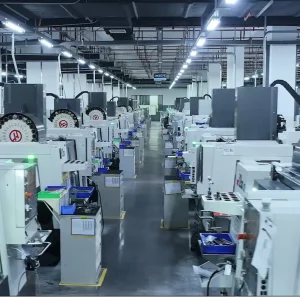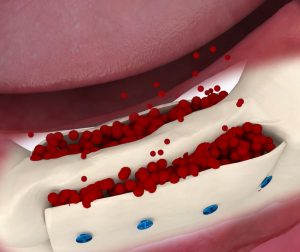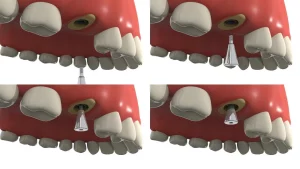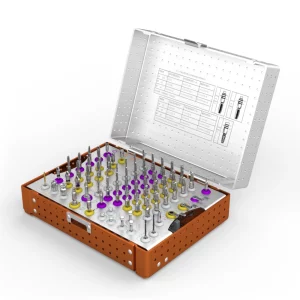An sophisticated dentistry technique called guided bone regeneration (GBR) is used to encourage the formation of bone tissue in regions where bone loss has occurred, usually as a result of illness, trauma, or tooth extraction. This method creates the perfect environment for bone regeneration by using membrane technology and biomaterials. GBR is often used to rebuild the jaw’s structure and prepare for dental implants. Even though GBR’s advantages are well known, patients often ask one important query: How long does the procedure take?
The surgical processes of GBR, postoperative care, follow-up needs, the overall recovery schedule, and variables affecting healing time will all be covered in detail in this article. You will have a better idea of what to anticipate from your GBR treatment experience at the conclusion.
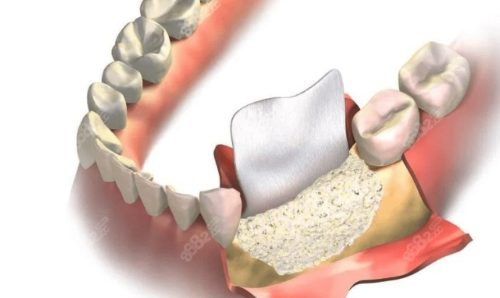
What is Guided Bone Regeneration (GBR)?
GBR is a specialised surgical procedure used to restore bone where it has been lost, often due to trauma, periodontal disease, or tooth loss. In order to provide a regulated environment that promotes the creation of new bone cells (osteoblasts) and inhibits the proliferation of non-bone cells, a barrier membrane is placed over the faulty region. To speed up the regeneration process, the treatment may employ autografts (bone from the patient’s own body), allografts (bone from a donor), or synthetic bone materials.
In order to support the implantation of dental implants, which depend on a solid and healthy bone structure for success, GBR is an essential technique in dental implantology.
Surgical Steps of GBR
In order to guarantee efficient bone regeneration, the GBR process is intricate and includes many crucial processes. The following is the usual procedure, albeit these stages may differ according on the patient’s health and the extent of the bone defect:
- Preoperative Preparation: The patient is usually offered painkillers for comfort and antibiotics to lower the risk of infection before to surgery. To further lessen the bacterial burden and cleanse the mouth, chlorhexidine mouthwash could be suggested.
- Surgical Incision and Soft Tissue Flap: The surgeon makes a little incision in the gums, usually on the palatal side of the alveolar ridge, while the patient is under local anaesthesia. The underlying bone is then revealed by lifting a soft tissue flap that is full thickness.
- Implant Placement (whether Applicable): The surgeon evaluates the amount and quality of the exposed bone to see whether it is appropriate for an implant. Additional procedures, including bone grafting, can be required if the amount of bone is inadequate. The implant is inserted into the prepared region after the bone is judged ready, guaranteeing initial stability.
- Measurement and Bone Grafting: To calculate the required quantity of bone grafting material, the size and form of the bone defect are measured. Allografts (from a donor), autografts (from the patient), or synthetic bone grafts are inserted into the defect site.
- Application of the Barrier Membrane: To aid in directing the bone regeneration process, a barrier membrane is applied over the bone transplant. The membrane type that is used may be either non-resorbable (usually titanium mesh, which must be removed later) or resorbable (which dissolves spontaneously over time). Sutures or pins are used to form and secure the membrane.
- Soft Tissue Closure: To encourage healing and reduce the chance of problems, the soft tissue is meticulously closed using tension-free sutures.
Postoperative Care and Follow-Up Requirements
In order to guarantee appropriate healing and the effectiveness of the bone regeneration process after GBR surgery, postoperative care is essential.
Typical follow-up treatment consists of:
- Postoperative Management: Pain Management and Antibiotics: Patients are encouraged to continue taking antibiotics and painkillers as directed by their surgeon in order to control discomfort and avoid infection.
- Oral Hygiene: To keep the surgical site clean during the first two weeks after surgery, chlorhexidine mouthwash is often advised.
- Nutritional Limitations: For the first few weeks, soft meals are advised and hard or crunchy foods should be avoided to avoid putting pressure on the healing region.
- Quitting Smoking: Patients are recommended to abstain from smoking throughout the recovery phase since it might seriously hinder healing and raise the chance of problems.
Visits for Follow-Up:
Four to Six Weeks After Surgery: An X-ray is taken at the first follow-up appointment to evaluate bone repair and regeneration.
6–8 Months After Surgery: If bone regeneration has been effective, the second stage of surgery, implant insertion, is carried out.
Eight Weeks After Implant Surgery: After the implant has completely fused with the bone that has grown back, implant restoration (such as the placement of crowns or bridges) may start.
Guided Bone Regeneration Timeline
The patient’s health, the materials used, and the extent of the bone deficiency all affect how long GBR takes. Nonetheless, the following is the procedure’s basic timeline:
The first week after surgery: Soft tissue healing Mild soreness, bruising, and swelling are common side effects that should go away in the first week.
Care: To avoid infection, keep taking medicines and washing your mouth.
Two-week postoperative recovery period: soft tissue healing The gums progressively shut as the wound site starts to heal. To prevent infection, more care should be taken to maintain proper dental hygiene during this time.
Period of Bone Regeneration (3-6 Months): Formation of New Bones New bone starts to grow in the grafted region because the barrier membrane stops soft tissue from encroaching on the bone deficiency.
Visits for Follow-Up: X-rays and routine examinations are planned to evaluate the state of bone repair.
Phase II Surgery: Implant Positioning (6–8 Months After Surgery): The second stage of surgery occurs if bone regeneration is effective. After removing the membrane, the implant is positioned or modified. The implant is now permitted to become a part of the bone.
Eight weeks after phase II surgery, implant restoration may be completed with the insertion of a crown or bridge, for example, once the implant has completely fused with the bone.
Factors Influencing GBR Time
Several factors can influence how long GBR will take, including:
- Patient Factors: The healing process may be impacted by age, general health, smoking, and dietary condition.
- Bone Defect Size and Location: It might take longer for larger or more intricate bone abnormalities to repair.
- Material Selections: Healing periods may be impacted by the kind of barrier membrane and bone graft material employed. Autografts, for instance, often integrate faster than synthetic grafts.
- After Surgery: In order to speed up recovery and guarantee effective regeneration, proper aftercare—which includes nutrition, medicine, and hygiene—is crucial.
Case Study: A Typical GBR Procedure
In order to rebuild his jawbone in preparation for dental implants, a 45-year-old man who had suffered severe alveolar bone loss as a result of tooth extraction had GBR. The patient had substantial bone regeneration over a 6-month period after adhering to a meticulous treatment regimen that included antimicrobial medication, autologous bone grafting, and the implantation of a non-resorbable titanium membrane. The patient had complete functional and cosmetic recovery after receiving a crown repair during an additional 8 weeks of healing following implant surgery.
Conclusie
Guided Bone Regeneration (GBR) is a complex and highly effective procedure for repairing bone defects in the jaw, particularly in preparation for dental implants. Although the exact time frame for GBR varies based on each case, the complete procedure usually takes six months to a year or more and involves many stages of surgery, recovery, and aftercare.
Even though GBR has a high success rate, the best results need frequent follow-ups, healthy living, and appropriate care. To create a customised treatment plan that fits their unique requirements and objectives, patients should speak with their dentist or oral surgeon. GBR may effectively restore the jaw’s function and appearance with the correct strategy, enabling the implantation of dental implants and the creation of a stunning, useful grin.

